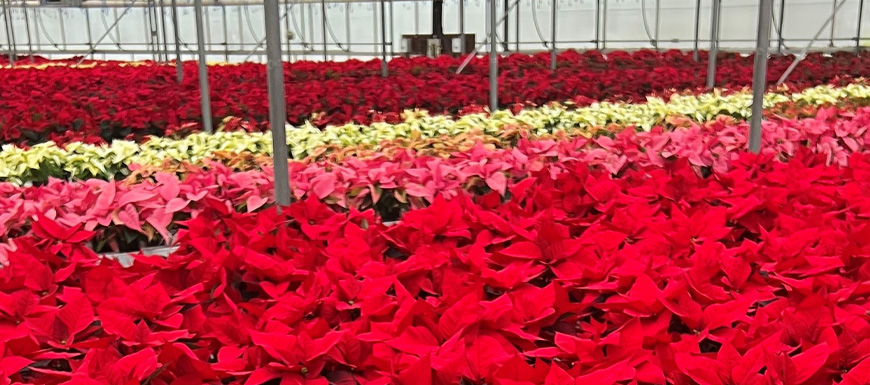
We collect basic website visitor information on this website and store it in cookies. We also utilize Google Analytics to track page view information to assist us in improving our website.
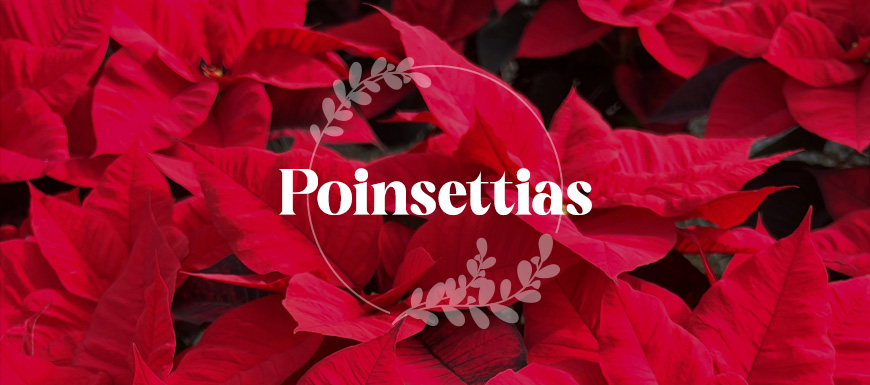
A classic holiday gift to bring to the family dinner or a party with friends, poinsettias are a traditional part of North American Christmas celebrations. Right beside Elf on the Shelf, popcorn strings and twinkle lights, poinsettias are fan favorite décor, with their red and white leaves or bracts, tying nicely into the colour pallet of the holiday season. And like any good tradition they have a good story.
The first United States Minister to Mexico, Joel Roberts Poinsett is attributed with introducing the plant in the 1820s to the US. As such, the English name, Poinsettia, pays homage to his introduction. Native to Mexico and Central America, the Euphorbia pulcherrima, are a perennial woody shrub and can actually grow up to 15 feet tall in their tropical environment. Today they are grown all over the world, with 4.93M produced in 2021 in Canada alone. In the US, over 70M poinsettias are sold over a 6-week period.
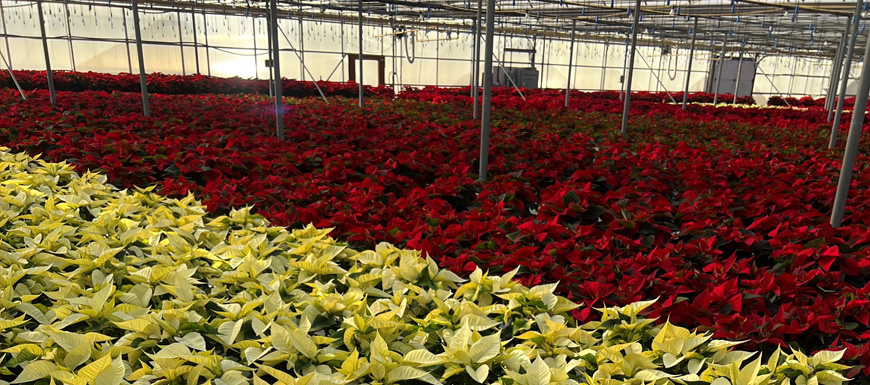
From creamy white, to pink and bright red. Some breeders have even got creative with patterns in combining the white with red, pink, green and even orange! Garden centres have gotten in on the act too, spray painting cream-colored varieties with blue or purple, and occasionally sprinkling with a little holiday glitter.
The poinsettia market has become so robust there can be up to 100 different cultivars to choose from. Some old favorites and fun new options include:
Christmas Eve: With pure red flowers and a long colour season, this is the traditional poinsettia we know and love.
Alaska White: A pure white option that compliments the Christmas Eve so well over the holidays.
Red Glitter: A mix of speckled cream and bright red with glossy dark green leaves.
Now that you understand the lay of the poinsettia land, let’s take a look at some basic care instructions.
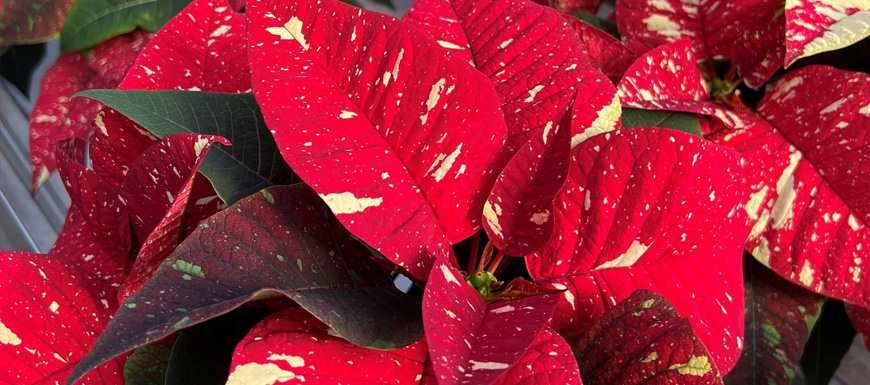
Place your poinsettia near a bright window facing south, east, or west where it will get at least six to eight hours of light. Although the plants can survive with fewer hours of light, they won't be as vigorous or as long-lived. Be aware that exposure to direct sunlight can burn bracts and leaves and a lack of adequate light, can injure the leaves causing premature yellowing and leaf drop.
You should saturate the soil completely until water runs through the drainage holes in the bottom of the pot anytime you feel the soil is dry to the touch. Be careful not to let the plant sit in water which can lead to root rot. If your Poinsettia came in decorative foil, as they often do, poke some holes in the bottom to allow excess water to drain away. Overwatering is the quickest way to kill a poinsettia. Pay attention if the leaves are wilting, this is a common sign of overwatering.
As mentioned above, the best temperature range for the plant is 18 to 21 degrees Celsius. Avoid placing poinsettias where there are temperature fluctuations like cold drafts, fireplaces, heat ducts or space heaters. Poinsettias will suffer damage if they are exposed to temperatures below 10 degrees Celsius.
Lack of humidity particularly in the winter can be a problem for poinsettias, like most houseplants. If your home tends to be dry, consider a small space humidifier to increase humidity levels in the area and surrounding your poinsettia with other plants.
Over the holidays your poinsettia does not need to be fertilized. This is their blooming period. If you plan to keep the plant throughout the year start fertilizing at half-strength when you see new growth, leaves, stems or bracts. You can use an all-purpose household plant fertilizer. Continue to feed every 3-4 weeks to keep the plant healthy and bolster nutrients for new growth.
If you’ve decided to keep your plant going all year and you’ve made it to May, you should transplant your poinsettia into a larger container, roughly about 2 to 4 inches larger than the original pot. Be sure to use a good soil mix that has organic matter such as peat moss and choose a pot that has good drainage.
Or if you are past frost, you could plant it in a part-sun garden bed. Ensure your location has a well-drained soil that gets 4 to 5 hours of sun every day. Just like that indoor pot mix, you’ll need to add organic matter like peat moss or compost into the soil. This will help with soil moisture and help out the roots.
Not matter what location you choose, indoors or outdoors, be sure to soak the poinsettia thoroughly after transplanting.
It is possible to keep your poinsettia going all year and have it rebloom, but it’s not for the lighthearted and requires specific care. The following process assumes you do not plant it outside and you’ve been watering it well since the holiday season.
Put your plant to bed each night from 5 p.m. to 8 a.m. If it’s exposed to any light this will delay the blooming process.
When we say light, we mean all light, including artificial light. Use an opaque box or other material to create a dark space. A closet will not suffice if when you open the door the plants see light.
Place the plant in front of its sunny window during the day and continue watering and fertilizing.
When Christmas lights are starting to appear in your neighborhood around the last week of November, it’s time to let those poinsettias sit by the window all day and night. Flower buds should start to appear. Stop fertilizing in December and treat your plant like when you first received it last year. If you’ve been diligent, your poinsettia bracts should start to have colour.
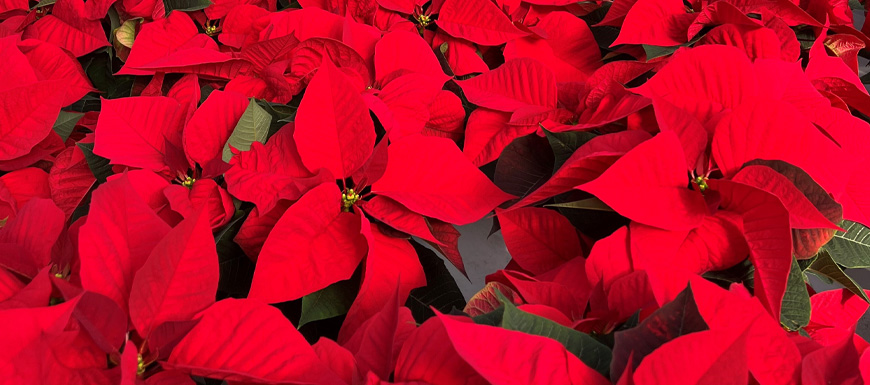
While beautiful and complimentary to your well decorated homes, these plants can experience some common problems with both their leaves and roots.
A poinsettia under stress will have its leaves develop yellowness around the veins or turn completely yellow. Here are a few causes of yellow leaves:
Brown spots or leaves can mean the poinsettia has a canker or is suffering from root rot. To try and save the plant, cut off any infected parts and transplant the remaining healthy parts of the plant. Get a clean pot and new soil, while applying a fungicide to the poinsettia for protection.
This is not a good sign and usually means the plant will die. When leaves fall it means that a cankar or root rot is well established from being underwatered, overwatered or overfertilized. If only some leaves are falling off, the plant might just need some more light.
Poinsettias are beautiful and unique plants that require a lotta love if you want to keep them all year around. Or you can simply keep the poinsettia on your holiday shopping list and enjoy!
